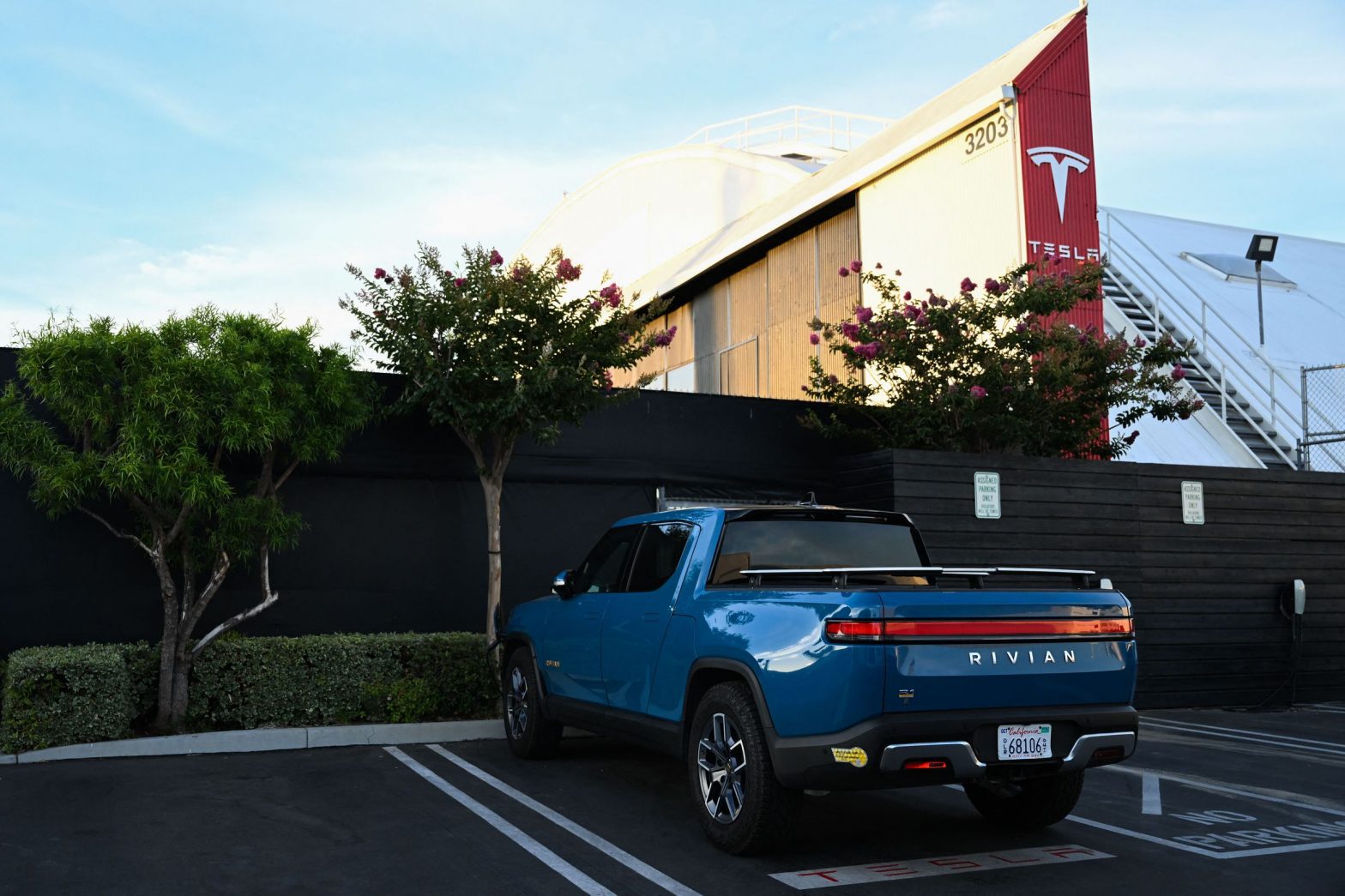/
Starting in 2025, Rivian’s R1T and R1S will come with Tesla’s North American Charging Standard outlet, giving the company’s customers access to 12,000 Supercharger stations in North America.
Share this story
:format(webp)/cdn.vox-cdn.com/uploads/chorus_asset/file/24738271/1242412532.jpg)
Rivian announced it would adopt Tesla’s electric vehicle charging standard for its future lineup of vehicles. The deal grants Rivian owners access to thousands of Tesla Supercharger stations across the country and puts Tesla one step closer to becoming the de facto EV charging standard in the US.
Starting in 2024, Rivian will offer adapters to its customers so they can access Tesla Supercharger stations, which use the company’s North American Charging Standard (NACS) plug and outlet. And in 2025, Rivian will begin to manufacture its R1T trucks and R1S SUVs with Tesla’s charging port, obviating the need for an adapter.
“This agreement makes electric vehicle ownership simpler by offering more ways to fast charge your Rivian vehicle and supports our shared mission to decarbonize transportation,” Rivian said in an email to customers.
The Rivian announcement follows similar announcements from Ford and General Motors about adopting Tesla’s NACS, giving Elon Musk’s company a clear advantage over the incumbent charging standard, CCS, also known as the Combined Charging Standard. CCS is the agreed-upon standard that most EV makers in North America have adopted for DC fast charging.
Rivian said the deal won’t affect its plan to install 3,500 fast chargers at 600 locations over the next few years. The company’s Adventure Network calls for the installation of over 10,000 charging stations, including the slower Level 2 chargers.
Tesla’s Supercharger network is widely recognized as superior to many of the third-party EV charging stations, most of which feature CCS plugs and the less utilized CHAdeMO charging standard. The company says it has 45,000 Superchargers worldwide, 12,000 of which are located in the US. According to the Department of Energy, Tesla operates nearly 2,000 DC fast charging stations in the US, as well as almost 5,000 Level 2 chargers.
And while other EV charging stations struggle with software glitches and faulty chargers, Tesla says its Superchargers are nearly perfect in their reliability. The company says that the average uptime of Supercharger sites last year amounted to 99.95 percent, down marginally from 99.96 percent in 2021.
Until recently, Tesla Superchargers were exclusive to Tesla owners — but that began to change several years ago when the company started offering access to non-Tesla EVs. Earlier this year, the Biden administration announced that Tesla would begin to do the same in the US as a prerequisite to tap into some of the $7.5 billion for EV charging in the Bipartisan Infrastructure Law.
Unlike in Europe, Tesla Superchargers in the US use a proprietary connector — this was Tesla’s “competitive moat,” the thing that initially offered protection from other automakers. In order to allow non-Tesla vehicles to access the chargers, the company installed a device called the “Magic Dock,” in which a CCS adapter is applied to the connector.
But now Tesla’s NACS is gaining traction on CCS and could soon become the de facto standard for EV charging in North America. With Ford, GM, and Rivian on board, the question remains: which automaker will come next?
